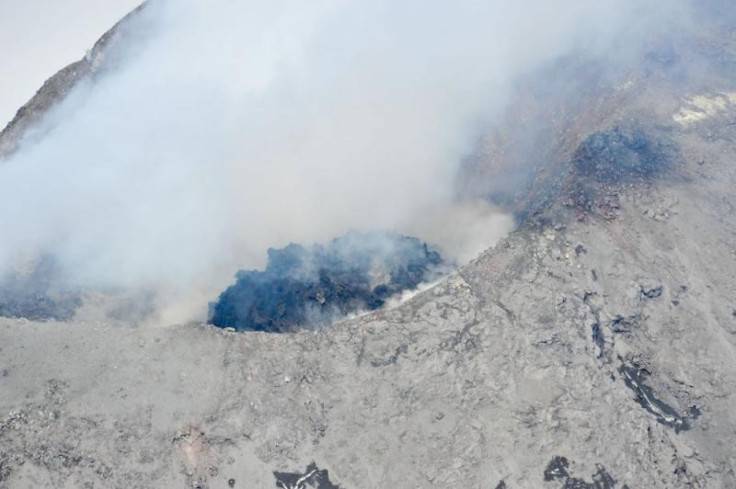Cleveland Volcano Erupts in Alaska: Latest Photos

The Cleveland volcano, located in the Alaskan island of Chuginadak, has been erupting without posing threat to life in the surrounding area. According to an AP report the volcano is undergoing slow eruption with no accompanying explosion and doesn't generate ash clouds.
"So far, it's just lava as far as we can tell from our satellite imagery and the people who have managed to see it from passing airplanes," John Power, the scientist-in-charge at the Alaska Volcano Observatory was quoted by AP.
However, potential threat cannot be completely ruled out, if the lava dome began to grow large enough to spill out which could explode creating ash plumes. "If it were to explode and push a bunch of ash up into the flight levels, then it would be a much more dangerous situation," Power said.
Seismic networks aren't detected at the volcano which is located 939 miles southwest of Anchorage. "Without a real-time seismic network on the volcano, AVO is unable to track local earthquake activity related to volcanic unrest, provide forecasts of eruptive activity, or confirmation of explosive, ash-producing events. AVO is monitoring the volcano using satellite data as it becomes available," said an activity notification report by Alaska Volcano Observatory.
"We've had a few good days where the top of the volcano has been sticking out of the clouds, so things are looking nice for us in terms of direct observations," Power said.
Eruptions and relatively weak explosions creating ash clouds are frequent on Cleveland. The last major eruption was in February when the lava eventually reached the ocean.
Cleveland Volcano is a nearly symmetrical stratovolcano about 1,730 m (5,676 ft) high, and is one of the most active of the 75 or more volcanoes in the larger Aleutian Arc which has erupted at least 21 times in the last 230 years.
The volcano's remoteness limits opportunities for its study, and the Alaska Volcano Observatory relies heavily on satellites for monitoring. The volcano is hazardous to aircraft as the volcanic ash released from eruptions can damage sensitive electronic equipment and sensors.
© Copyright IBTimes 2024. All rights reserved.












